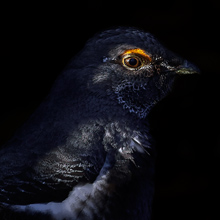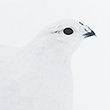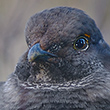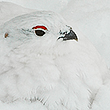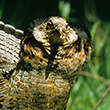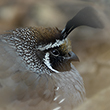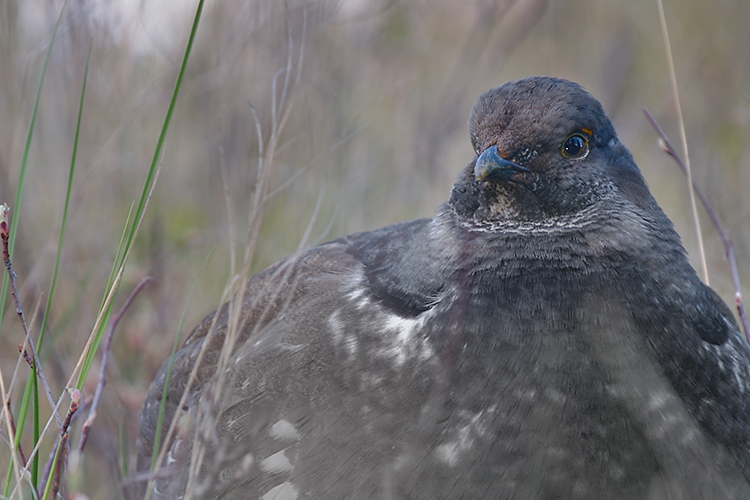
Availability: Undetermined - Enquiries?
In the Field
Blue Grouse in Grass. Findlay Creek, BC, Canada. May 2, 2006.
Blue Grouse (which aren't actually blue at all) can be very frustrating to try to photograph. Not only do they like to sit still and pose until just BEFORE you've got your gear out (at which time they scurry away) but they also like to sit on the ground at the base of thick evergreens or in dense grass. On this occasion I decided to quit fighting their natural behaviour and show the bird "in situ" in long grass. Lens choice was critical to getting the right shot and was driven by two main factors: 1) I knew that I might have to move freely and quickly and thus didn't want to be constrained by a tripod (so the lens had to be one I could hand-hold) and 2) I knew the background had the potential to be very distracting so I wanted to use a lens that would allow me to throw the background smoothly out of focus (i.e., the lens needed to have good "bokeh" - smooth out-of-focus zones). So I chose my highest quality mid-range zoom and "went hunting". Was I successful? The result is above...
Behind the Camera
Blue Grouse in Grass. Findlay Creek, BC, Canada. May 2, 2006.
Digital Capture; Compressed RAW (NEF) format; ISO 100.
Nikon D200 with with Nikon 70-200mm f/2.8G ED-IF AF-S VR lens @ 200 mm (300 mm equivalent with digital conversion factor) - hand held (VR turned to "On" and in "Normal" mode).
1/30s @ f5.6; no compensation from matrix-metered exposure setting.
At the Computer
Blue Grouse in Grass. Findlay Creek, BC, Canada. May 2, 2006.
Details to follow.
Conservation
Blue Grouse in Grass. Findlay Creek, BC, Canada. May 2, 2006.
Species Status in Canada*: This species is not designated as at risk.
Until recently the Blue Grouse (Dendragapus obscurus) was considered a single species with at least two sub-species. However, mitochondrial DNA sequence data, combined with older behavioural and distributional data, has resulted in the decision to split the species into two species - Sooty Grouse (coastal), and Dusky Grouse (found in the interior).
Dusky and Sooty Grouse are endemic to mountainous regions of western North America and both have geographic ranges restricted to moderate to high altitude regions. Many populations undergo an altitudinal migration, spending winters in conifer forests at higher elevations and then descending to lower elevations and more open terrain to breed in the spring. During breeding the males perform a dramatic dance and produce repetitive low-frequency vocalizations (hoots) to attract females to their breeding territories.
*as determined by COSEWIC: The Committee on the Status of Endangered Wildlife in Canada


















